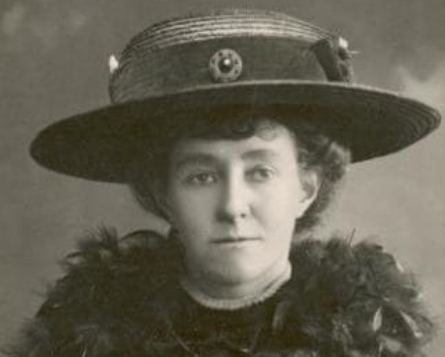Although Emily Davison is one of the best-known suffragettes, I felt I had to include her in my blog as I get so sick of hearing young women saying they can’t be bothered to vote. Here’s why you should:
Emily Wilding Davison was born in 1872 and had a comfortable middle-class upbringing. She excelled academically and studied at the Royal Holloway College. But the death of her father, when she was 19, put the family finances under pressure, so she quit her studies and worked as a governess. Eventually she saved enough money to pay for a term at St Hugh’s Hall, a women’s college in Oxford, and earned a first class degree in English language and literature, but was not given it as Oxford did not grant degrees to women at the time.
After college, Emily was frustrated to find that career options for women were limited. She took the only route open to her – teaching – during which time she became interested in the women’s movement. In 1906 she joined the Women’s Social and Political Union (WSPU) and soon became a popular speaker because of her passion and wit.
For three years Emily tried to teach and campaign but eventually decided to devote all of her time to the cause, suffering financial hardship in the process. Her desire to draw public attention for the women’s suffrage led her to ever increasing acts of daring. In 1909, she was sentenced to a month’s hard labour in Strangeways Prison in Manchester after throwing rocks at the carriage of chancellor David Lloyd George. Her refusal to eat while in prison led to her being force fed, an ordeal she underwent 49 times over the next few years. When she blockaded herself in her cell to avoid another force feeding, a prison guard placed a hose through a cell window and drenched her with icy water.
The incident only spurred Emily on to more militant acts. In 1911 she hid in a cupboard in the House of Commons. She remained there during the census so that she could list her place of residence as the “House of Commons” on the census form. Later that year she set fire to a letter box. While in prison in Holloway in 1912, desperation at the torture her comrades were undergoing led her to throw herself down an iron staircase. After her release, she told one journalist that this had been a suicide attempt, as she felt that “by nothing but the sacrifice of human life would the nation be brought to realise the horrible torture our women face. If I had succeeded I am sure that forcible feeding could not in all conscience have been resorted to again.”
By 1913, the WSPU looked no closer to securing their aim of votes for women than they had at their inaugural meeting. 10 years earlier. Suffragettes were enduring increasingly brutal treatment in prison. And so Emily performed the ultimate publicity-seeking act. At the Epsom Derby, she stood by the railings, a flag of the WSPU tied around her. With the race in full flow, she ducked under the railings and tried to grab the rein’s of the king’s horse. The horrific event was witnessed by King George V and Queen Mary, and also captured on film. Historians have examined the footage and believe she was trying to attach her flag to the horse’s bridle, rather than throw herself in the path of the horse. The horse trampled her and unseated the rider, who escaped with minor injuries. Emily, however, was left with a fractured skull and internal injuries, form which she never recovered. She died four days later, exactly 104 years ago today, aged 40. Her funeral on saw thousands of suffragettes accompany the coffin, with tens of thousands of people lining the streets of London.
History hasn’t been kind to Emily. She’s been portrayed as an unbalanced fanatic, causing more harm than good to the cause. But her death highlights the extreme measures the suffragettes were driven to. So I beg women of the UK to remember that your vote costs you nothing. It cost Emily Davison everything.



